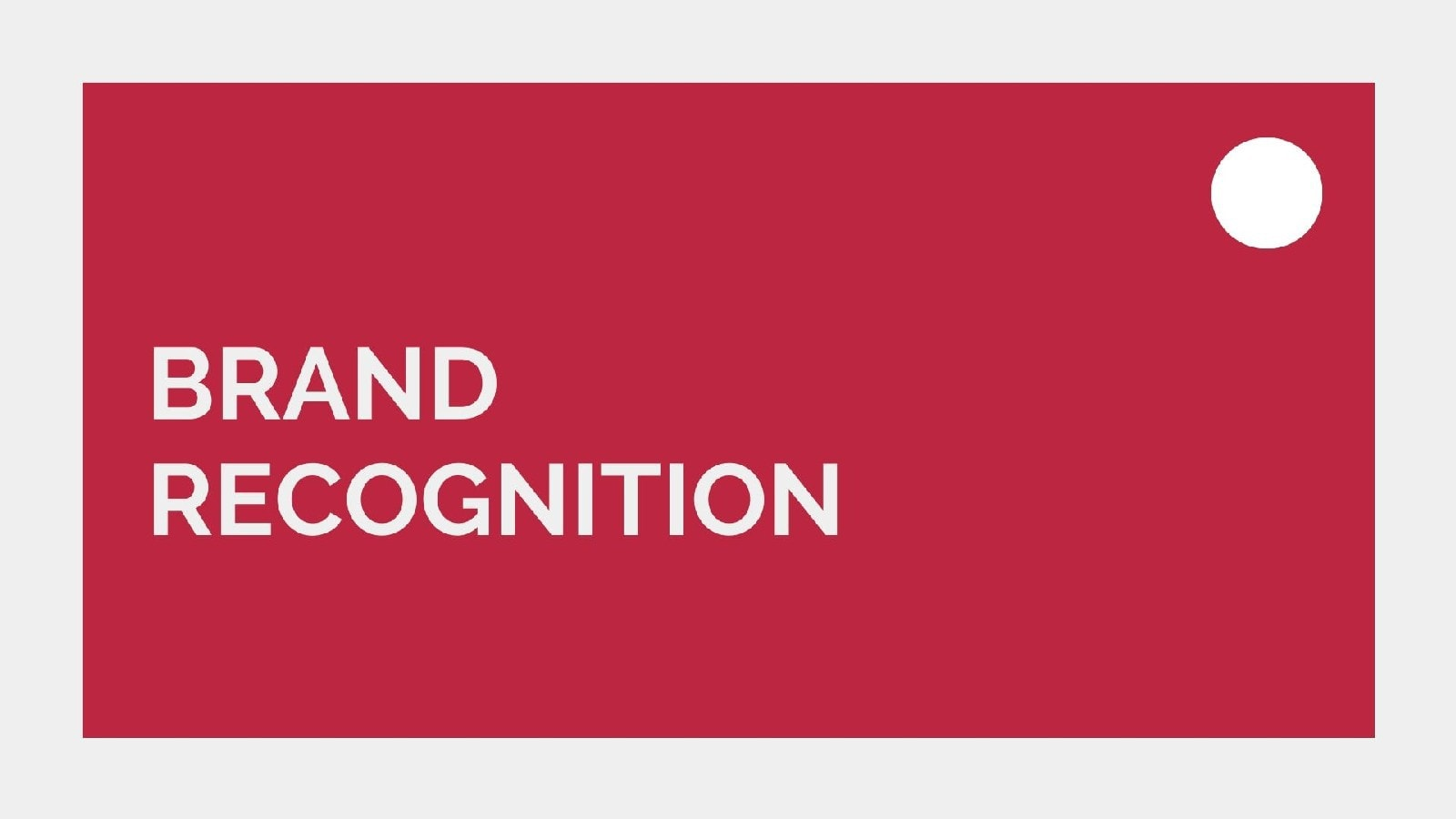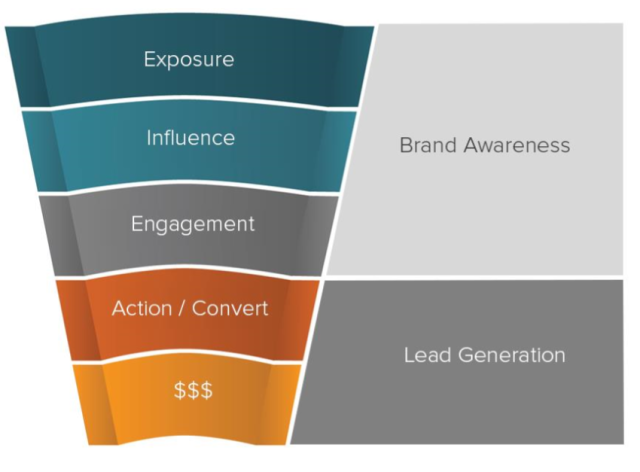When a consumer is more familiar with a brand and understands what the brand stands for, they are more likely to make a purchase from that brand.
It seems very straightforward, doesn’t it? Unfortunately, this process does not take place in a day or two.
Your brand needs time to draw in and win over a potential customers before you can keep them on your side. As a result, brand advertising is a vital aspect of marketing, as it assists to build long-term brand recognition and increase client loyalty over time.
Brand awareness is a necessary first step in achieving this end goal in the marketing process.
There are 2 types of ads:
Publicity for a certain company or product.
The purpose of this form of advertising is to initiate and develop a relationship with a user over the course of time. In other words, it involves developing a brand that the consumer can identify with and trust.
Ad campaigns that are based on results rather than on impressions or clicks.
These commercials are designed to compel a user to take instant action. Social media ads, email campaigns, and direct mail are all examples of this. When utilised in conjunction with active writing, these all create urgency, which prompts an immediate response. (Example: Register now or you’ll miss this amazing offer!)
The majority of the advertisements that we encounter on a daily basis, whether on television, radio, or posters, are brand advertisements.
Big brands like Apple, Coca-Cola, and Kfc are constantly reminding consumers how hip, refreshing, and delicious their products are with slogans like “I’m lovin’ it.”
On the other hand, brand advertising is not nearly as common on the internet because digital advertising is more frequently praised for its ability to produce immediate and measurable outcomes.
What Is A Brand’s Equity?
The worth of a company’s brand, also known as the measure of how people feel about the brand, is referred to as brand equity.
The extent to which customers are familiar with the brand, the degree to which they favour it over competing brands, the depth of their relationship with the brand, and the degree to which they are loyal to it are all factors that contribute to strong brand equity.
If a brand has solid brand equity, it will have more opportunities to develop and grow its business with the assistance of the consumers who are most devoted to them.
Measuring brand recognition, brand image, consumer preference, and financial indicators are the four variables that are used to quantify brand equity.
Measures of brand awareness include questionnaires and structured observations, social listening technologies, search and site traffic data, and determinations of the number of customers who are familiar with a certain brand.
In order to quantify customer loyalty to a brand, purchasing behaviour insights such as repeat purchase behaviour and the amount of time in between purchases are used.
Data such as purchase intentions measurements and surveys are used to measure preferences.
The financial indicators relating to the increase in sales that occurred as a result of the brand marketing initiatives. Establishing a solid relationship between your brand and its customers is essential if you want to construct a solid amount of brand equity.
The Question Is, Does the Performance Prove It?
Brand advertising is more difficult to track because it doesn’t require viewers to take any action.
Many advertisements for brands are simply repeated in the hopes that they will be seen and leave a positive impression over time.
These advertisements can take the form of display, rich media, or videos. The internet is a medium that places a strong emphasis on performance, and most companies place a high value on metrics such as click-through rates, conversion rates, ROI (return on investment), and others.
For the same fundamental rationale, advertising firms may recommend performance-based advertisements to their clients. This allows the agencies to demonstrate quantitatively that their marketing campaigns are successful.
The fact of the matter is that study after study demonstrates unequivocally that the likelihood of a consumer making a purchase from a company increases proportionately with the level of brand awareness the consumer possesses.
People have a greater propensity to do business with and make purchases from companies they are familiar with and trust.
Long-Term Investing Will Reward You in the Long Run
At the very top of your marketing funnel is brand awareness, which consists of three components: exposure, influence, and engagement.
It is much more likely that potential customers will take action and acquire your product or service if they have become familiar with your brand, been affected by it, and interacted with it (through performance-based advertisements).
Let’s be genuine, making a good first impression is hard. However, the first step in a brand’s journey toward success is for people to become aware that the brand even exists.
The very initial stages of a brand are represented by the exposure stage, which is located at the very top of the funnel. This involves deciding on a message that will be connected with your brand as well as a logos, typography, and trademark colour palette to go along with it.
It is essential to initially solidify the identity of a company in order to ensure that potential customers will be able to seek out your brand from a sea of other competitors.
- Influence
When the initial presentation of branding has been completed and the foundation has been laid, it is time to take things up a notch. The “influence” stage of brand advertising is eventually what assists draw in the faith, by proving to the buyer that your company is better than the other. This stage of brand advertising is known as the “influencer” stage. Running campaigns, providing sponsorship for community activities, and playing host to charity events that are relevant to your brand are all great ways to enhance your company’s credibility.
- Engagement
When you actively communicate with prospective customers, you get them one step closer to making a purchase of your product or service. Through engagement, the public is able to recall the product(s) and message associated with your brand.
This can be accomplished by the use of memorable faces that are associated with the brand, snappy phrases, or jingles.
For instance, when you think of the breakfast cereal Frosted Flakes, you likely remember Tony the Tiger’s well-known catchphrase, “They’re great!”
This particular sort of branding is lasting and interesting for the viewer, which increases the likelihood that they will purchase Frosted Flakes the next time they are at the supermarket.
Lead nurturing strategies like email, pay-per-click advertising, and retargeting are helpful in moving prospects farther down the sales funnel and closer to making a purchase.
Keeping Tabs on the Achievements of Brand Advertising
Businesses may overlook brand advertising due to the fact that it does not provide an instant ROI (return on investment), but the gradual development of brand relationships may be driving sales without your knowledge.
For instance, putting all of the blame for a sale on a conversion from a search ad could contribute to some confusion among consumers.
Although the search ad might be the deciding factor in the consumer making the purchase, it is possible that it was not the major marketing action that led to the customer making the decision. In many cases, effective search ads as well as other conversions may be traced back to constant and consistent brand advertising that has laid the framework.
In addition, there are several metrics that may be tracked for marketing initiatives associated with brands.
- Impressions
These are essential for branding initiatives since they count the number of individuals who viewed an advertisement you run. Since you are more concerned with people viewing your content than with them acting on it, you might find it more beneficial to run your campaign based on the cost-per-thousand impressions rather than the cost-per-click model.
- Reach
For campaigns aimed at increasing brand recognition, the most important metrics to track are the number of visitors who saw your advertisement, its frequency, and the average amount of times each visitor saw your advertisement.
- Click-through rate
Because buyers are discovering you through the usage of certain terms, this is useful information for search ads.
Conversions are one example of an alternative metric that might be used to evaluate the effectiveness of display advertisements.
Don’t Undersell Your Capabilities
Those who are familiar with performance-based or direct-response advertising are aware that targeting is one of the most important factors in achieving desirable results.
But advertisements for brands can reach a bigger audience. For instance, you might believe that Lexus should only promote to those individuals who are currently in a financial position to purchase one, but doing so would result in a more limited pool of potential buyers.
The trick is to have patience! Building a brand may also be successful with younger customers who have a higher level of education and who may one day become part of the target market.
If a smart college student is infatuated with Lexus, they are going to think of the brand again when it is actually time to purchase a car.
Get Ready to Witness Some Outcomes
The game of waiting can be a part of brand advertising. In order to see results, you need to have patience, tenacity, and a little bit of trust. But when paired with ads based on performance, your company has the potential to not only generate instant return on investment but also future sales.


